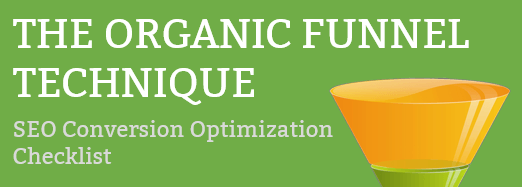
When I was a kid, I think I drove my Mom nuts wanting to constantly have my height measured. We had so many marks on the wall next to our garage door and dates next to them it looked more like someone had painted a messy, grayish, stripe next to the door. I wanted to know how much I was growing. I never understood why some days it seemed lower than previous measurements, but of course I never recorded those. Who wants to think they are shrinking!
Looking back at that wall, it was clear that during the early teen years I was going through a growth spurt because the tick marks were further apart. As a child, I just wanted to know how much I grew. As an adult, I think what would have been more interesting would be my growth rate, or how much I grew over time. That way, I could have known when I was growing faster, or starting to finish my growth spurt. My Mom might have known to wait a little longer to buy that next pair of shoes or jeans or at least had me wear flip-flops for awhile since I was outgrowing everything.
What is a Growth Rate?
In the context of business, a growth rate typically refers to the rate at which a business’s key performance indicators (KPIs) change over a period of time, often expressed as a percentage. It can be calculated for various business metrics, such as revenue, profit, customer base, market share, or any other relevant parameter that reflects the company’s growth or expansion.
For example, the revenue growth rate of a business measures the percentage change in revenue from one period to another, such as from one quarter to the next or from one year to the next. It can be calculated by taking the difference between the revenue in the current period and the revenue in the previous period, dividing it by the revenue in the previous period, and then multiplying by 100 to express it as a percentage.
The growth rate is an important indicator of a business’s performance and trajectory. A positive growth rate indicates that the business is increasing its sales or market presence, while a negative growth rate may indicate a decline or contraction. Businesses often use growth rates to assess their progress towards achieving their goals, evaluate the effectiveness of their strategies, and make informed decisions about resource allocation, investment opportunities, and future planning.
So how does this relate to our businesses? Usually, marketing teams measure how many leads they brought in a month, or how many people attended a webinar or how many times their content was shared socially. Sales teams measure how many leads they get, how much they close, and how much commission they are making. These numbers are reported to the leadership team and then they decide where to invest and the next month. These are all numbers that should be measured and tracked as they are all great indicators of performance at micro levels, but they are just tick marks, not truly indicative of real performance, real growth. Most organizations miss the real metric they should be tracking, the growth rate.
Why is Growth Rate Important?
A growth rate is calculated uniquely from one company to the next, but basically, it is a measure of how fast a company is growing, not growing, or achieving its goals. It is the ultimate indicator of business (or ministry or non-profit) health. The only reason a company would not be interested in this rate is if they are happy with the status quo or just don’t care anymore. A growth rate can tell you if business is slowing down before you get into the red. If a growth rate starts decreasing, you know that even though you may be growing, you are slowing down for some reason. It could be purely environmental in nature such as seasonal changes, but unless you track your growth rate over time, you won’t know if you’re having abnormal declines in business or something more normal in the business season.
Knowing your growth rate is a simple task. It is so rarely used by businesses and executive teams, except by those serious about growth, yet it gives such a significant advantage. If your growth rate is positive, you are heading in the right direction. If its negative, then you need to figure out why in a hurry, you don’t want to get shorter do you?
Now, if you are interested in growth rate hacking, check out our write up on what growth hacking is.
How Do You Calculate Growth Rate?
The equation for calculating a growth rate is typically expressed as a percentage change from an initial value to a subsequent value. The formula for calculating your growth rate is:
Growth Rate (%) = ((Subsequent Value – Initial Value) / Initial Value) * 100
where:
- Subsequent Value: The value of the variable (e.g., revenue, profit, etc.) at the end of the time period for which the growth rate is being calculated.
- Initial Value: The value of the variable at the beginning of the time period for which the growth rate is being calculated.
To calculate the growth rate, subtract the initial value from the subsequent value, divide the result by the initial value, and then multiply by 100 to express it as a percentage. The growth rate indicates the percentage change in the variable from the initial value to the subsequent value, reflecting the rate of growth or decline over time. A positive growth rate indicates an increase, while a negative growth rate indicates a decrease.
How Can I Improve My Business Growth Rate?
Improving business growth rate typically requires a well-thought-out strategy and diligent execution. Here are some potential strategies that may help improve your business growth rate:
- Market Analysis and Targeting: Conduct thorough market research to identify opportunities, trends, and customer needs. Define your target market and tailor your products, services, and marketing efforts to effectively reach and engage your target customers.
- Innovation and Product Development: Continuously innovate and improve your products, services, or business processes to stay competitive and meet evolving customer demands. Consider investing in research and development (R&D) to create new offerings or improve existing ones.
- Sales and Marketing Optimization: Develop and implement effective sales and marketing strategies to increase your customer base and revenue. Utilize various marketing channels, such as digital marketing, social media, and content marketing, to promote your brand and connect with potential customers.
- Customer Relationship Management (CRM): Nurture existing customers and build long-term relationships. Provide excellent customer service, offer personalized experiences, and seek customer feedback to improve your products and services.
- Strategic Partnerships and Alliances: Explore strategic partnerships or collaborations with other businesses to access new markets, resources, or expertise. Partnerships can help expand your reach and accelerate growth.
- Financial Management: Maintain healthy financial management practices, such as monitoring cash flow, optimizing pricing and cost structures, and managing debt effectively. Sound financial management can provide the resources needed to invest in growth initiatives.
- Talent Management: Recruit, develop, and retain top talent to drive innovation and growth. Ensure that your team has the necessary skills, motivation, and support to achieve business objectives.
- Operational Efficiency: Continuously review and optimize your business processes to increase efficiency and reduce costs. Streamline operations, eliminate waste, and leverage technology to improve productivity.
- Customer Retention and Loyalty: Focus on retaining existing customers and building customer loyalty through loyalty programs, incentives, and personalized experiences. Loyal customers are more likely to repeat purchases and refer others to your business.
- Strategic Planning: Develop a clear and well-defined strategic plan that outlines your business goals, objectives, and action plans. Regularly review and update your strategic plan to adapt to changing market conditions and business dynamics.
- Conversion Optimization: This is a strategy of testing your incoming traffic with different customer journeys that can drive up sales, leads, and appointments. The most basic of this type of optimization is A/B testing.
- Search Engine Optimization: This focuses on creating content that is valuable for your customers that drives traffic to your website that will convert into customers.
It’s important to note that the strategies for improving business growth rate may vary depending on the industry, size, and specific circumstances of the business. It’s recommended to thoroughly analyze your business, market, and competitive landscape, and consult with relevant experts or professionals, such as business consultants or industry mentors, to tailor an appropriate growth strategy for your unique situation.

